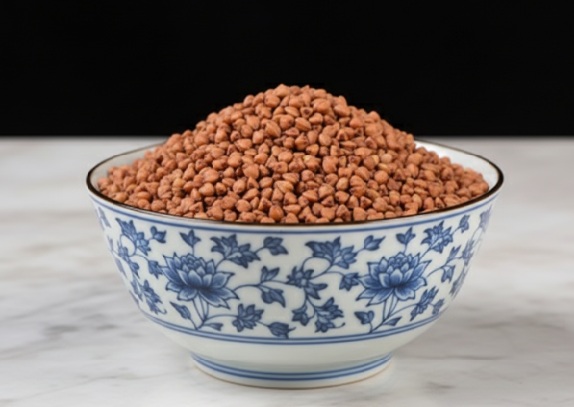Tartary Buckwheat Chinese Herb

Tartary Buckwheat (Ku Qiao): A Bitter Herb for Digestion, Blood Pressure, and Cholesterol
Introduction
Tartary buckwheat, known as Ku Qiao (苦荞) in Traditional Chinese Medicine (TCM), is a slightly cold, bitter herb and food-medicine that supports digestion, clears heat, and benefits circulation. It is valued both as a grain substitute and a medicinal food for lowering blood pressure, reducing cholesterol, and aiding in metabolic disorders. Rich in flavonoids such as rutin, it is commonly used to strengthen vessels, improve digestion, and prevent damp-heat-related conditions.
What Is Tartary Buckwheat?
Ku Qiao refers to the seed of Fagopyrum tataricum, a species of buckwheat grown in mountainous regions of Asia. In TCM, it is classified as bitter and slightly cold, and it enters the Spleen, Stomach, and Large Intestine meridians. It is considered both a staple food and an herb, supporting digestive health while regulating blood and qi circulation.
Health Benefits of Tartary Buckwheat
Supports digestion and clears food stagnation – Helps with bloating, indigestion, and sluggish bowels by aiding the movement of food and dampness.
Lowers blood pressure and cholesterol – High in rutin, it strengthens blood vessels, reduces arterial stiffness, and helps balance blood lipids.
Benefits blood sugar regulation – Often used in dietary therapy for diabetes or metabolic syndrome due to its low glycemic index and bitter-cold nature.
Dispels damp-heat – Useful for damp-heat conditions such as heaviness, sluggish digestion, or loose stools.
How to Use Tartary Buckwheat
As a staple food – Cooked as porridge or steamed as rice substitute, commonly eaten daily in small amounts.
In medicinal teas or powders – Roasted seeds brewed as a tea or ground into flour for therapeutic use.
In formulas for circulation and digestion – Sometimes paired with Shan Zha (Hawthorn) or Jue Ming Zi (Cassia Seeds) to support cardiovascular and digestive health.
Where to Buy Tartary Buckwheat
- Available in Asian grocery stores and TCM shops – Sold as whole seeds, roasted buckwheat tea, or flour.
- Online sources – Easily found from health food retailers, herbal suppliers, and TCM distributors.
Look for:
whole seeds with a nutty aroma when roasted, darker seeds (Tartary variety is more bitter than common buckwheat), and properly stored, dry, sealed packages to prevent dampness.
Are There Any Side Effects?
Tartary buckwheat is generally safe and consumed widely as a food. However, its bitter-cold nature makes it unsuitable for those with weak digestion, cold stomach, or loose stools. Overconsumption may cause bloating or diarrhea. As with all herbs, use under practitioner guidance if taking for medicinal purposes.
Conclusion
Tartary buckwheat (Ku Qiao) is a unique medicinal food that clears damp-heat, supports healthy digestion, lowers blood pressure and cholesterol, and nourishes circulation. With its dual role as both a staple grain and a healing herb, it is an excellent choice for cardiovascular and metabolic health when used appropriately.
FAQ
Can Tartary buckwheat help with high blood pressure? – Yes, it is rich in rutin, which supports vessel health and reduces hypertension.
Is it safe for daily use? – Yes, especially when consumed as food. For medicinal use, moderate amounts are best.
Can it help with weight management? – Yes, its low glycemic index and damp-heat clearing nature make it supportive for weight and metabolic balance.

